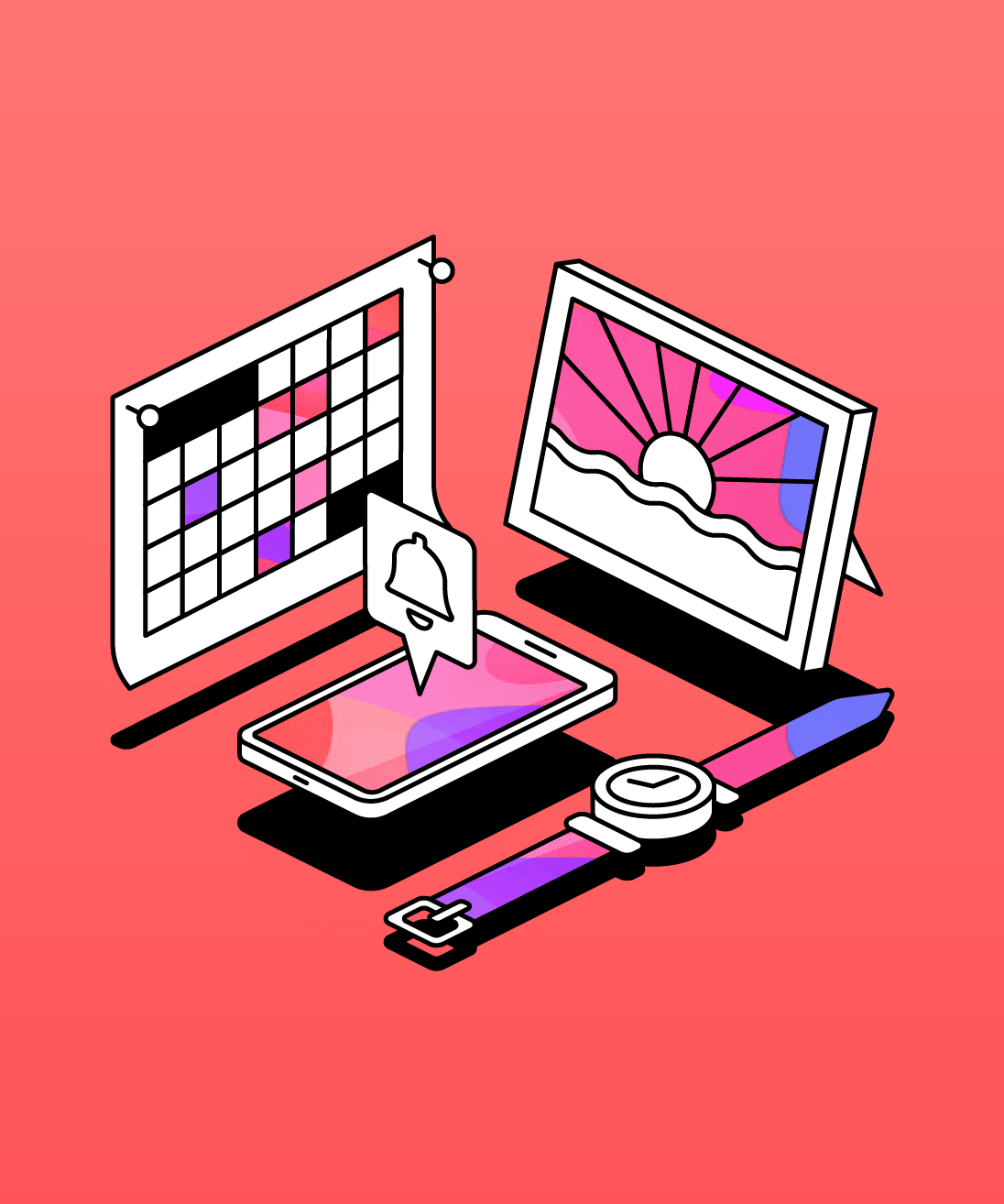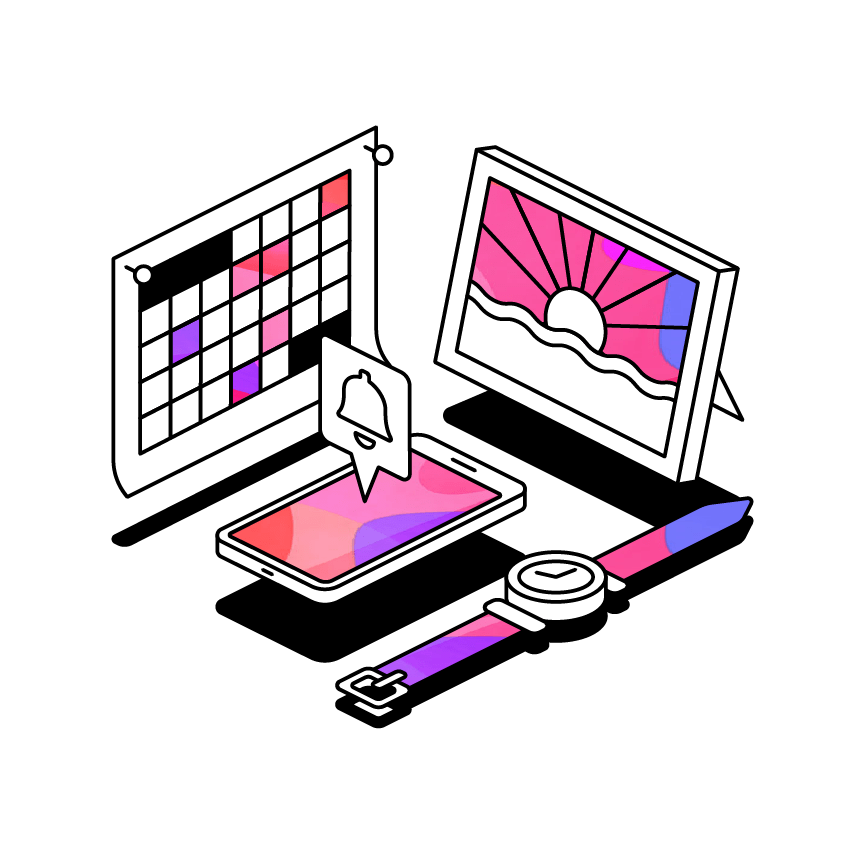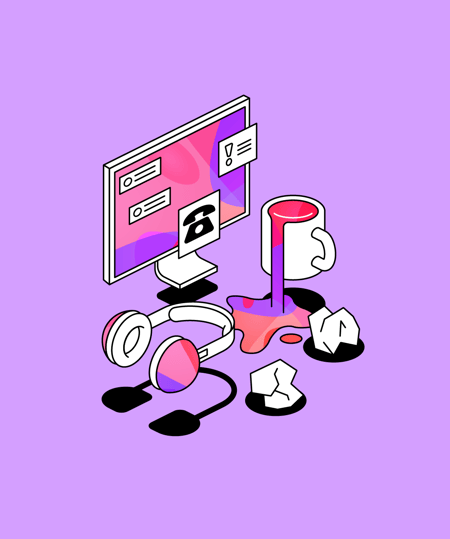How to become a self-regulated learner
Self-regulated learning is the goal of many higher ed institutions and instructors. And as this post explains, a key part of it is note taking
 4 min read
4 min read
 Published: 5 Jul 2021
Published: 5 Jul 2021
 Luke Garbutt
Luke Garbutt


What makes an independent, confident learner? One that not only persists and graduates, but one that’s ready to meet the outside world afterwards?
What is self-regulated learning?
Self-regulated learning isn’t just a higher ed buzzword. It describes a network of attitudes and behaviours that create success at college and beyond.
According to the US Department of Education, self-regulated learning ‘refers to one’s ability to understand and control one’s learning environment.’ Crucially;
‘self-regulation should not be confused with a mental ability or academic performance skill. Instead, self-regulation is a self-directive process and a set of behaviours whereby learners transform their mental abilities into skills and habits through a developmental process that emerges from guided practice and feedback.’ - TEAL Center Fact Sheet No.3: Self-Regulated Learning
Self-regulated learning starts with a recognition of learning as a process that can be observed and improved. With the right support and guidance, learners of all abilities have the potential to become self-regulating learners.
The pay-off, as research demonstrates, is that learners 'who can self-regulate their learning processes have higher levels of achievement'.
How do we get there?
The three elements that make up self-regulated learning are ‘metacognition, motivation and learner behaviours’.
Metacognition
Metacognition is thinking about thinking. Or, in this context, learning about learning. How aware of how your mind works are you? And how much are you able to critically assess your own response to new information?
Metacognition is needed to define goals, set expectations and evaluate performance.

Motivation
Self-regulation of any kind requires motivation. And motivation in the classroom often comes from self-efficacy. How much confidence do you have in accomplishing a certain task? If you have low self-efficacy, you’re likely to give up easier, put off harder tasks and respond negatively to set-backs.
But another question arises when thinking about your motivation - are you ‘intrinsically’ or ‘extrinsically’ motivated to learn? Would you, for example, be more driven by a sense of satisfaction in learning itself? Or would the external reward of a better grade motivate you more?

Learner behaviours
How often and how do you study? Do you take notes, and if so what do they look like, and how are they used afterwards?
Learner behaviours are influenced by both metacognition and motivation. Without good metacognitive processing, it’s likely that behaviours will not be as effective as they could be. And whether a student is self-efficacious or intrinsically or extrinsically motivated will have an effect on behaviour, too, including 'choice of tasks, persistence, effort and achievement'.

Putting it all together
Self-regulated learning rests on learners feeling that they have control over outcomes and a sense of success and growth.
From there, it becomes easier for students to monitor their learning behaviours and find ways of learning that work for them.
Self-regulated learning involves a process of its own, often represented as a flow-chart or diagram. Here’s how it typically looks:
It’s a process that involves a continual assessment of where you are as a learner. Setting goals, testing new approaches, and finding a good rhythm for learning are the objectives.
But first, students need to be supported in overcoming obstacles to self-regulated learning. For example, students with disabilities like autism might experience problems with metacognition, and students with mental health issues might lack motivation.
If you work as a disability support professional, it’s worth thinking about how this process could influence your consultations with students.
As we referenced at the top, self-regulated learning is arrived at through guidance and feedback. To help facilitate the kinds of conversations you need to be having with your students, here are a few quick suggestions.
Learner behaviours and how to improve them
What does a student actually do when they’re learning and studying?
A learner behaviour could be as simple as a decision to attend each class or as complex as how to organize study time.
However, one thing governs good learning behaviours, and that’s questioning.
Here are a few questions learners need to be asking themselves as part of the learning process.
Questions
What do I want to learn?
- What are the goals of the class, study session or textbook revision? In simple terms, express what you want to get out of each act of learning
How am I trying to learn it?
- If taking notes, how are you going about it? If you’re reading a book and highlighting passages, what are you doing with that information? Quickly set out what it is you’ll be doing and why
How well have I learned it?
- How do you feel after attending that class or revising that textbook? Have you successfully learned what you set out to? Reflect on how you got to this stage.
What can I do better next time?
- What worked and what didn’t? Is there something missing? Maybe highlighting information alone didn’t help you learn the material. Next time, you might want to quiz yourself or make a recording. Whatever it is, run your idea for next time by the same process.
By asking and answering each of these questions, a student can make self-reflection a habit of their learning. But equally important are a few rudimentary study skills that you can also help them with.
The most important among them is note taking.
Self regulated learning distilled
Note taking is a mirror of self-regulated learning. It involves reflection, self-awareness and a will to improve. And it’s also a great way to pursue your wider learning objectives, as a good set of notes is very hard to beat as a study aid.
But like the self-regulated learning process itself, it creates obstacles for learners.
For instance, how can a learner improve their note taking if distractions in the environment make note taking near impossible? And how can a learner find it useful if they get information overload every time they try?
Learners need to believe that they can tackle note taking on their own terms. They need the self-efficacy to meet the demands that this learning behaviour places on them.
In other words, they need to be able to do it effectively, independently.
For that, technology can help.
Self-regulated note taking
We’ve written about the effectiveness of note taking as a learning behaviour before, and we want to emphasize this again. Taking good notes is proven to be a game changer for learning. But, as we’re always keen to point out, it requires a level of skill many students don’t have.
The problem with note taking is that the thing that makes it so valuable as a learning behaviour - its high use of cognitive function - makes it inaccessible to many students.
So we created an accessible structure and method for note taking that helps students get the most from their classes - a structure that guides students towards self-regulated note taking optimised for better learning, regardless of invisible obstacles.
Tech for independence
Enabling self regulated learning is just as much about building and encouraging independence and self-efficacy as it is about learner behaviours.
By solving note taking, you could help students feel ready for the challenge of college like never before.
Find out what difference accessible note taking could make at your institution here.
Written by Luke Garbutt

Up next: The Note Taker’s Dilemma
Learn how a binary choice facing note takers destabilises learning, and how learners can get the best of both worlds through tech.
More from Better Learning
View All
 2 min read
2 min read
3 student-proven time management techniques that work
From navigating demanding college schedules to excelling in the professional sphere, time management is a vital skill. Glean's student ambassador, Sherrie Zhao, shares her first-hand experiences and proven techniques for mastering this essential skill, offering valuable insights for students and professionals alike.

 5 min read
5 min read
How Glean helps first generation students overcome challenges
Being the first in your family to step onto a university campus is a triumph. But beneath the pride lies a unique landscape of pressures and uncharted territories. This blog explores the hurdles first gen students encounter and how Glean provides the support needed to unlock their full potential.

 2 min read
2 min read
Master class notes with text formatting
Your note taking just got an upgrade! We’re thrilled to announce that text formatting features are now live in your app. Let's take a look at how you can use text formatting to make the most of your notes.





